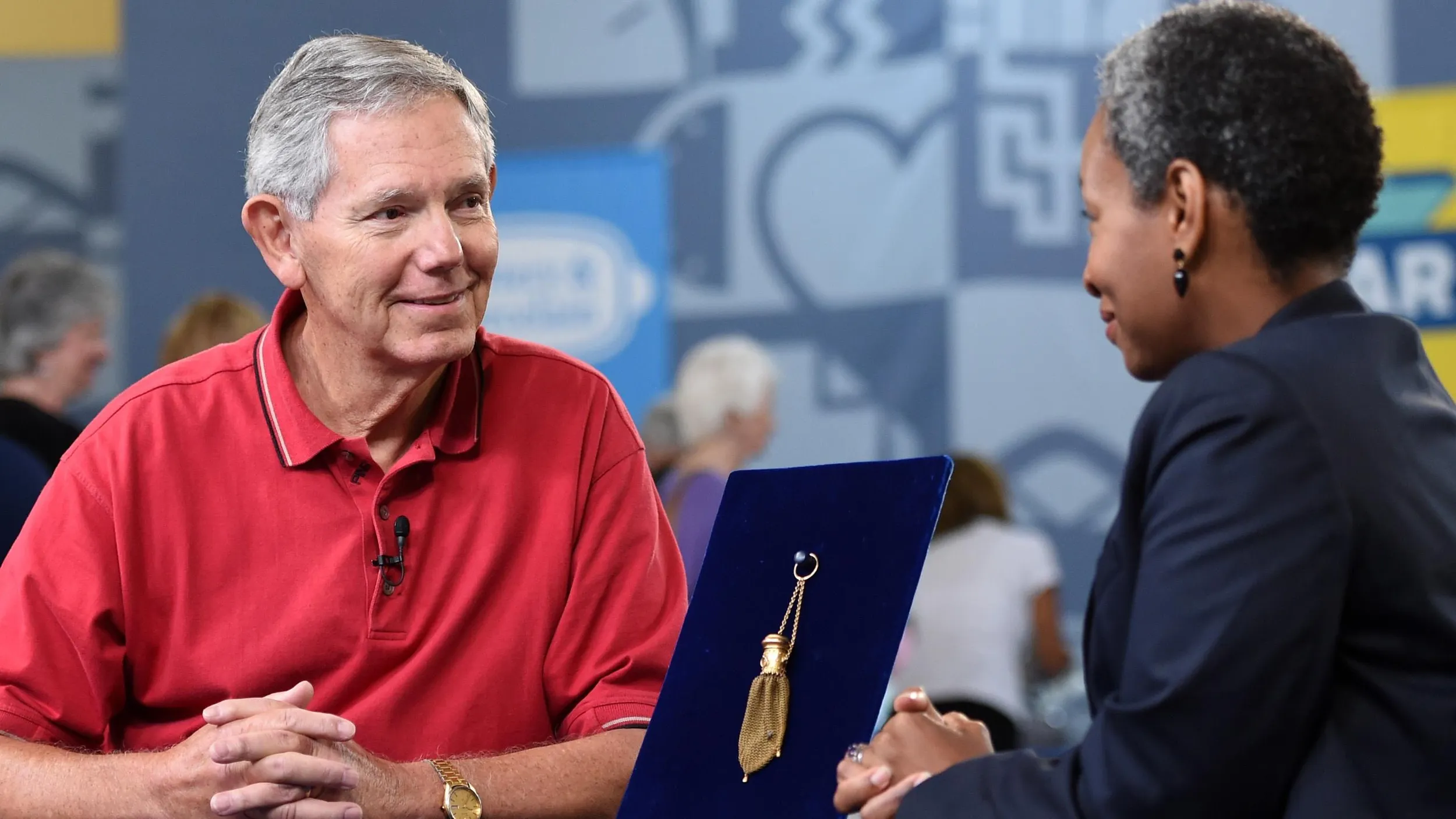GUEST: My mother passed away in 1980, and we inherited this. She was originally from New York City, grew up in New York City. Her grandmother lived there, and this belonged to her grandmother. It's a decorative purse, actually, with, we think, an amethyst stone on it. My mother said her grandmother referred to it as her Mad Money purse.
APPRAISER: Well, let me tell you what I know about your object.
GUEST: Okay.
APPRAISER: It is 14-karat yellow gold. The mesh is in extremely good condition. Usually, these have tears or it's broken, and yours is completely intact, which is wonderful to see. It is a change purse. This is probably late 1890s, part of the Gilded Age, if you would think about that, or late Victorian, depending on where you are. And it is in fact an amethyst on the top, and I'm going to show you that. The amethyst is actually about ten carats, right up there. The cool thing about your object is that it opens. And then you can pull it open slightly and it expands, so you can actually get coins in there if you wanted. And this is also in really good shape because normally, these rivets are broken.
GUEST: Okay.
APPRAISER: Right on the top, it's stamped "14 karat" for the gold, so 14-karat yellow gold, but you also have a little hallmark, and this is for Carter, Gough Company, and they were from Newark, and there were lots of jewelers in Newark
making exceptional jewelry. And this is just a beautiful example of late Victorian Gilded Age jewelry. Do you have any idea of its value?
GUEST: No, I don't. If it's 14-karat gold, obviously it has a gold value, but no, I don't.
APPRAISER: Similar examples, retail, are between $5,000 and $7,000.
GUEST: Ah. Hoo-hah!
APPRAISER: Hoo-hah, I love it.
GUEST: Hoo-hah!
APPRAISER: If it hit something, it would break for sure.
GUEST: Ready?
GUEST: We're going to have more pictures of this one. (laughing)












